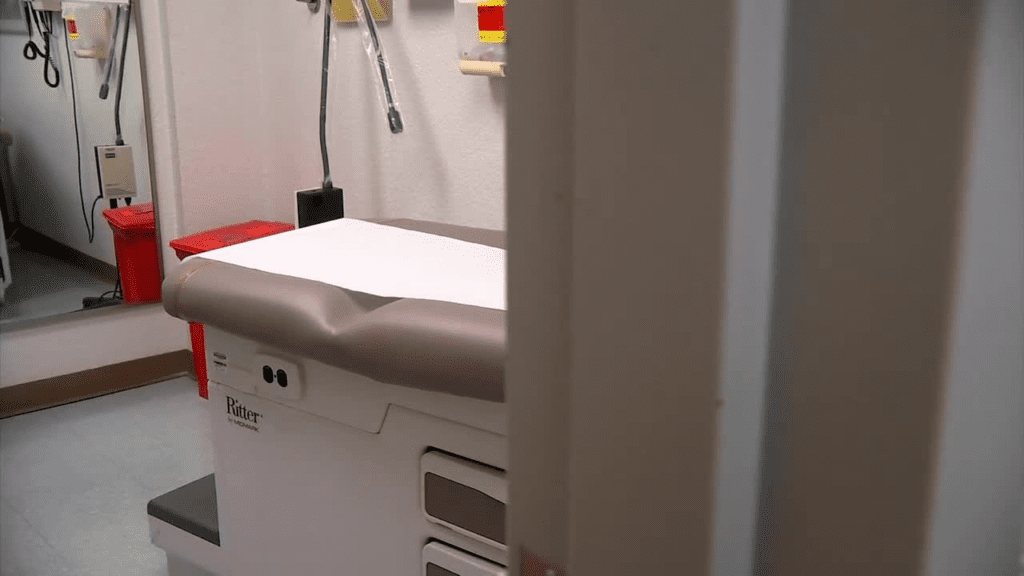According to a report from the United Healthcare Foundation, Oklahoma’s standing in terms of women’s and children’s health is alarmingly low, placing the state near the bottom of the rankings.
Dr. Angela Hawkins, an expert from SSM Health St. Anthony Hospital in Oklahoma City, pointed out that the limited availability of healthcare services in smaller communities further exacerbates this issue for the state.
Introducing Dr. Angela Hawkins
Dr. Hawkins, a proud Oklahoman, completed her undergraduate studies at Oklahoma City University, obtained her medical degree, and finished her residency at the University of Oklahoma Health Science Center. She is board-certified by the American Board of Obstetrics and Gynecology and serves as the chair of the American College of Obstetricians and Gynecologists for Oklahoma.
A recent survey conducted by Oklahoma’s chapter of the American College of OBG-YNs revealed that over half of the 258 OB-GYNs surveyed have considered leaving the state due to its restrictive abortion laws.
A Healthcare Crisis in Oklahoma
Dr. Hawkins described the current climate as both daunting and promising. “It’s a scary time but also hopeful,” she remarked.
She advocates for policies aimed at safeguarding the health of women and children, emphasizing that the future of many lives hinges on the legislative changes made today. According to the United Health Foundation, Oklahoma ranks an alarming 47th when it comes to women’s health, with numerous factors contributing to this position. Dr. Hawkins noted that 54 out of 77 counties in Oklahoma have limited or no access to healthcare services.
“Many people have either no access or just a single hospital in their county,” she explained. “There’s significant work ahead of us to enhance that situation.”
Legal Barriers that Deter Healthcare Professionals
As the vice chair of Oklahoma’s Maternal Mortality Review Committee, Dr. Hawkins highlighted the concerns expressed by OB-GYNs regarding the current legal environment. Over half of those surveyed indicated they were thinking about leaving Oklahoma due to its abortion regulations.
The exodus of maternal healthcare providers has been observed in various states with conservative legislatures, driven by fears of potential legal ramifications stemming from their medical choices. “Seventy-nine percent of those physicians felt they could no longer practice evidence-based medicine,” Hawkins stated.
Inequitable Access to Health Insurance
“Oklahoma oscillates between being second and third in the nation for insurance access,” Dr. Hawkins explained.
She pointed out that many women enter pregnancy without insurance and often have unmanaged health conditions, which complicates their pregnancies and elevates risks. Rural healthcare centers face a particular challenge; they depend heavily on insured patients, as government-funded programs like Medicare and Medicaid provide lower reimbursement rates compared to private insurance.
“Keeping the doors open is a struggle,” Hawkins admitted.
Medicaid Expansion in Oklahoma
In 2021, Oklahoma joined over 35 states in expanding Medicaid eligibility, a significant step toward addressing these healthcare challenges.
“Funding is a crucial part of the solution,” Dr. Hawkins noted.
Investing in Healthcare Workforce
Dr. Hawkins stresses the need for enhanced support and incentives for rural healthcare facilities as vital investments in the healthcare workforce. She believes that local doctors who serve their communities make a meaningful impact on public health.
“What I love most about my job is taking care of my patients,” she said. “Fortunately, I genuinely enjoy what I do, and I cherish my patients, which makes my work fulfilling.”
Efforts are underway to sustain rural residency programs, with advocates striving to retain future physicians in these underserved areas and secure necessary funding for their initiatives. Additional strategies include enhancing telehealth and online options to improve healthcare access in rural communities.


